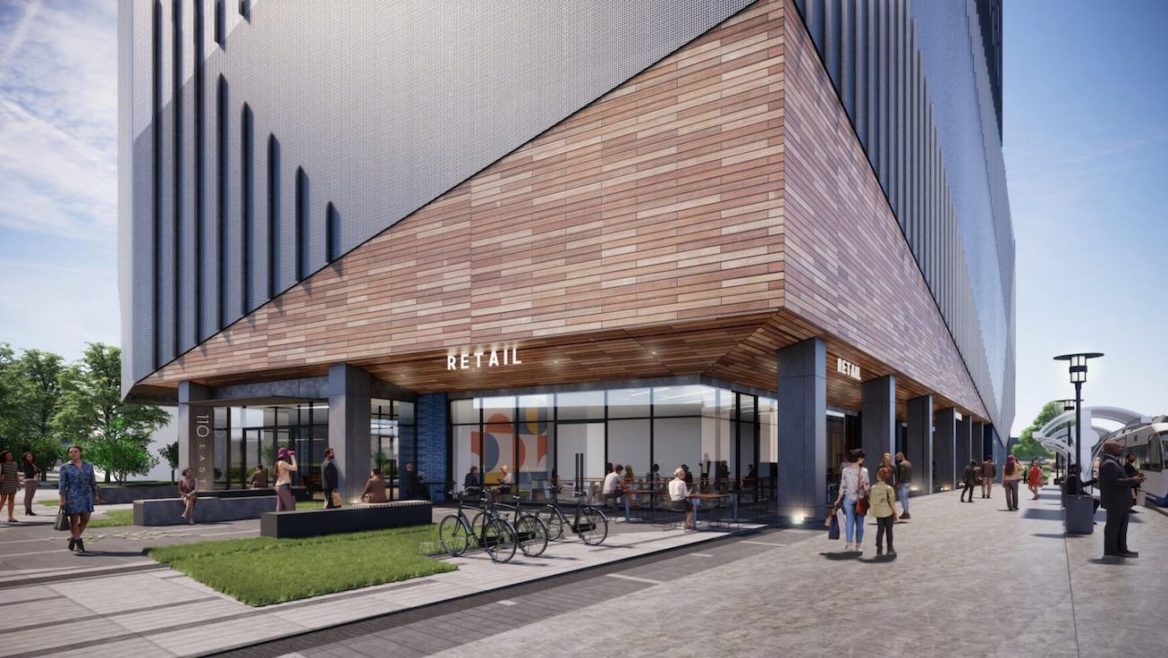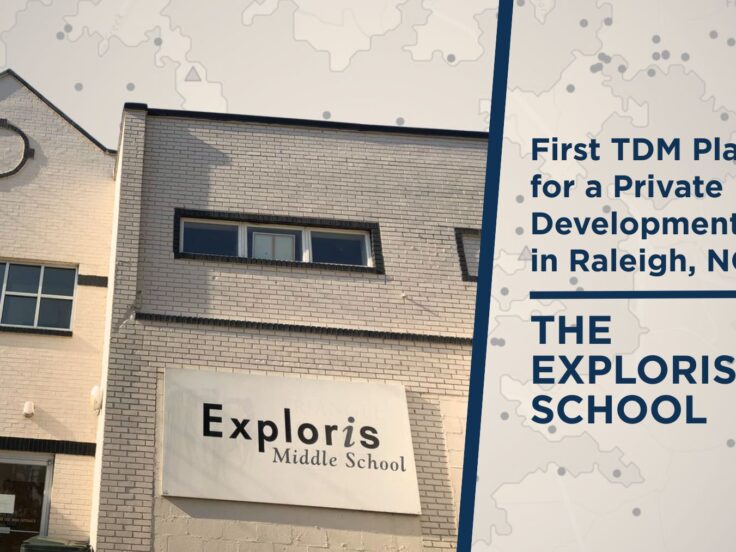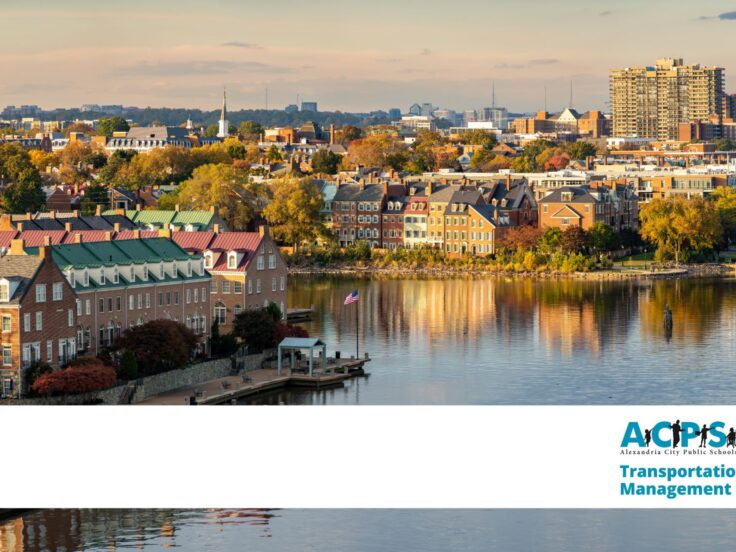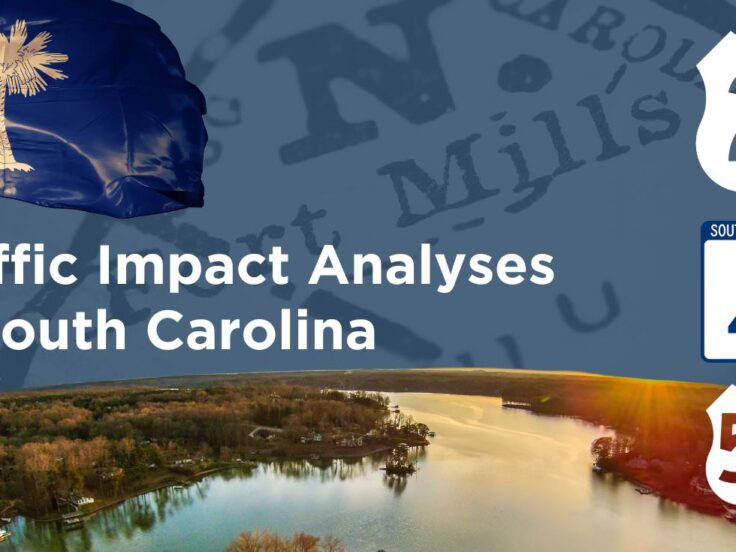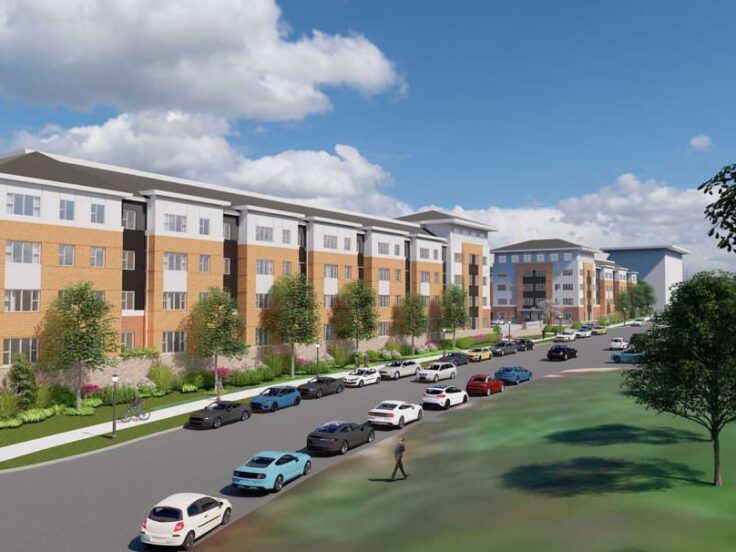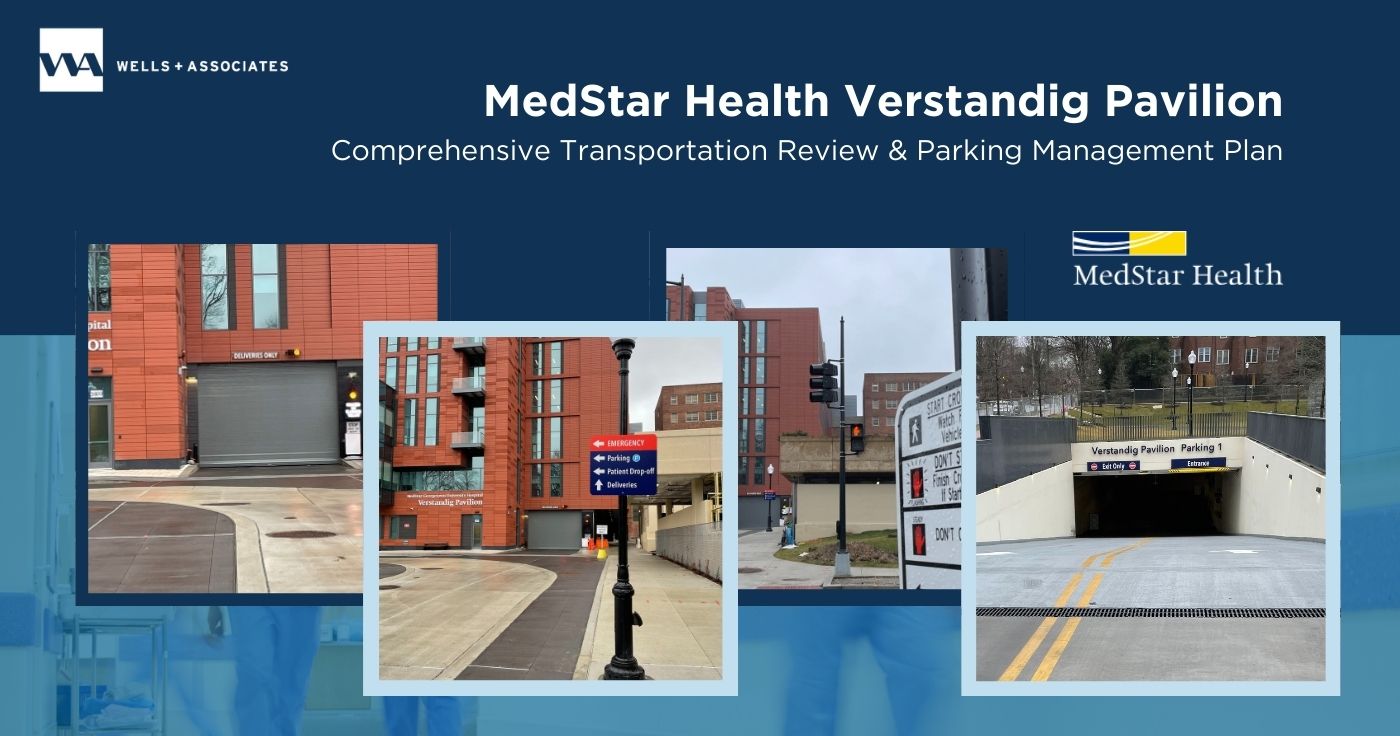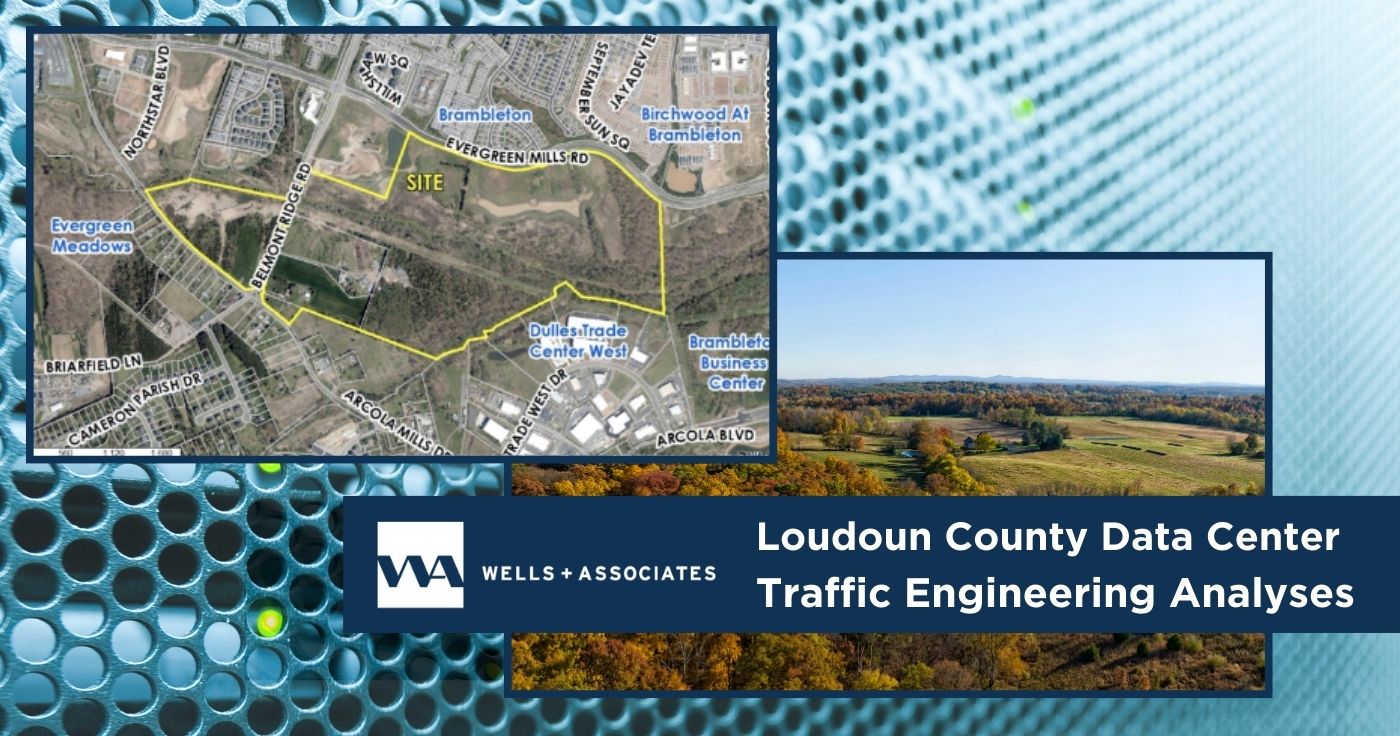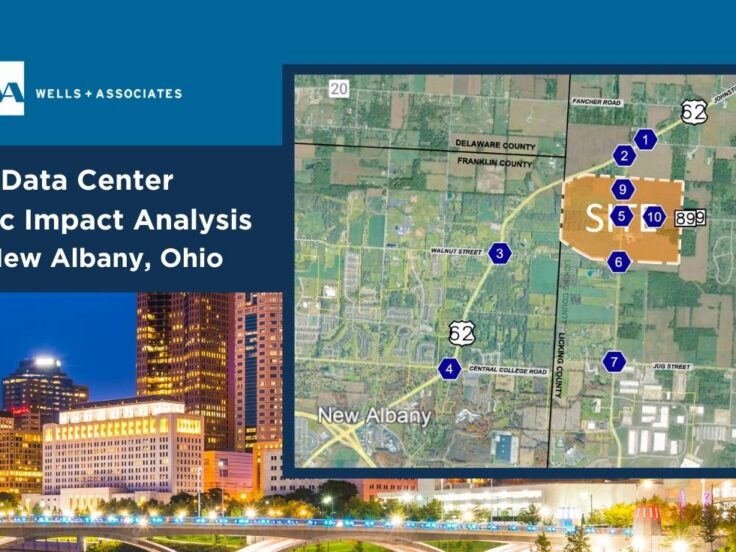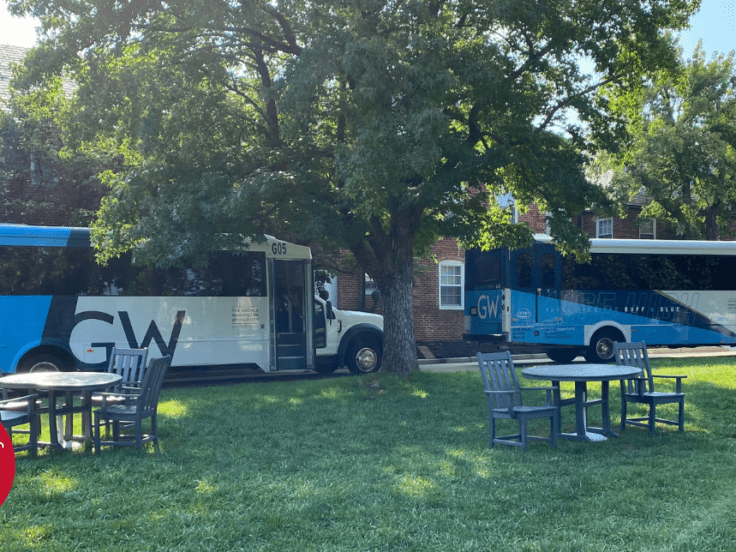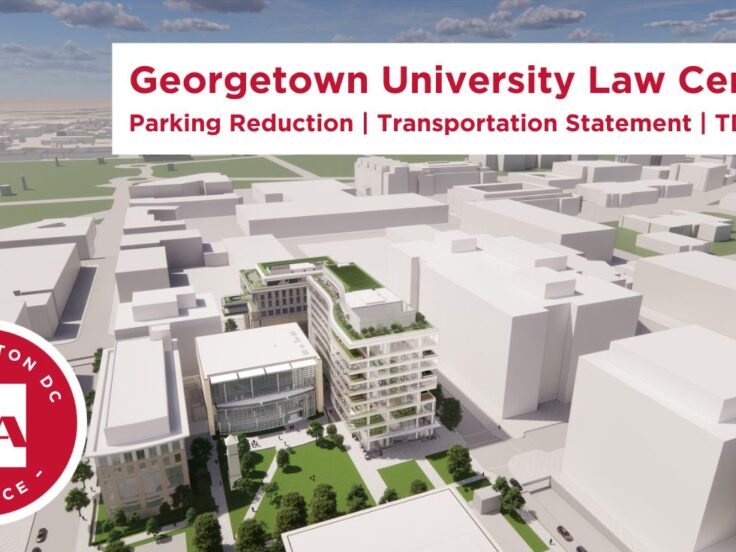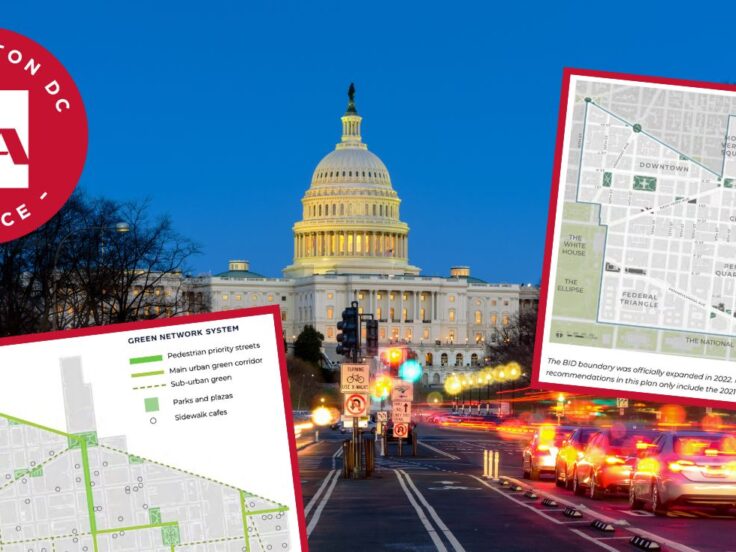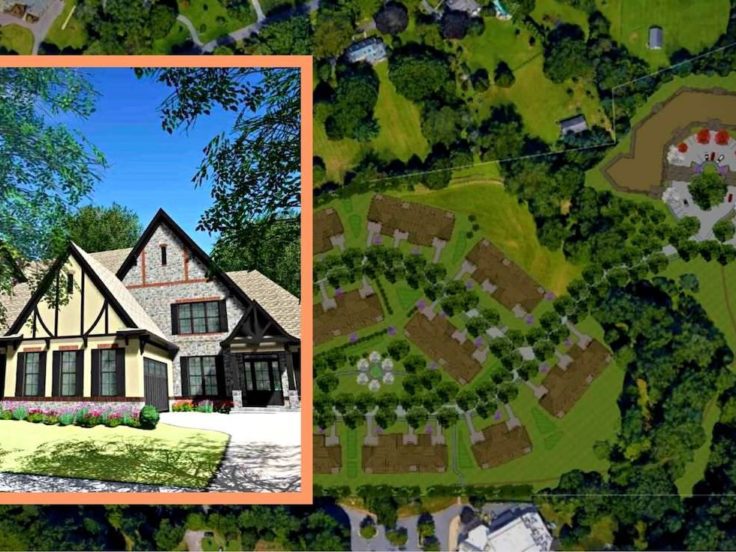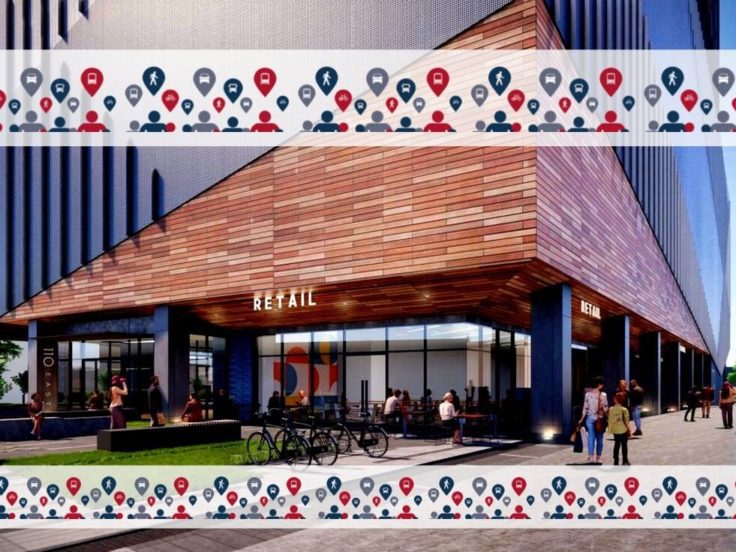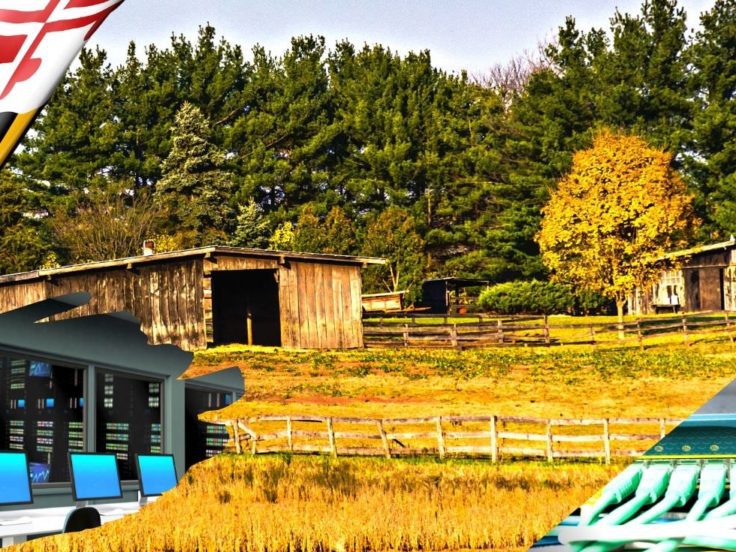Nicholas Kosar
TDM programs provide tenants with increased mobility choices and enhanced access to the property, help developers reduce parking construction costs and attract tenants with transportation amenities, and enhance the quality of life in the surrounding neighborhood by reducing vehicular traffic. Wells + Associates is pleased to have collaborated with the first development in the City of Charlotte to submit a TDM Work Plan to the City of Charlotte for review and approval.
Background: The Benefits of TDM Plans for Charlotte Developments
Transportation Demand Management (TDM) is a set of strategies that influence travel behavior by mode of transportation, frequency, time, route, or trip length to reduce single-occupancy vehicle (SOV) trips. To put it another way, TDM programs ease demand for existing transportation infrastructure by expanding the transportation choices available to commuters and tenants at individual properties and within the cities that surround them.
Many cities around the United States require a TDM Plan from new real estate developments that are expected to have a significant impact on traffic congestion in the communities that surround them. A TDM Plan demonstrates that a development is committed to reducing its impact on traffic congestion and how it will do so. Typically, a TDM plan includes a list of on-site amenities that will encourage tenants to walk, bike, carpool, or use public transportation for their daily activities.
Transportation Demand Management at 110 East
110 East is located along East Boulevard in the South End neighborhood of Charlotte, North Carolina. Development team Stiles and Shorenstein have plans for the site to include a new 23-story office tower containing approximately 370,000 square feet (S.F.) of Class A+ office space, which includes ground-floor retail uses. Access to and from the site is provided via driveways along East Boulevard and South Boulevard.
The South End neighborhood of Charlotte is a vibrant mixed-use area just south of Uptown. The LYNX Blue Line traverses the neighborhood and provides easy access into center city and other points of interest in the region. Other shared mobility options in the site’s vicinity include bikeshare, scooter-share, and carshare options. Additionally, this area of the city is benefiting from the ongoing development of numerous mixed-use transit-oriented projects, as well as infill development, which are increasing the density of the neighborhood and changing its character to an urban center that naturally promotes multimodal transportation choices.
A Closer Look at 110 East’s TDM Work Plan
As described in the approved development conditions agreed upon by the Applicant and City of Charlotte staff, the Transportation Demand Management (TDM) Work Plan will require items at 110 East such as:
- Fitness Center and Changing Facilities
- Carpool Parking
- Bicycle parking and bikeshare
- Wayfinding and signage
- Transit Screens
- Priced Parking
The plan includes basic and supplemental components; basic components meet the TDM conditions of development requested by CDOT and deliver minimum TDM program standards, while supplemental components are considered best practices for delivering optimally performing TDM programs. 110 East will implement strategies to support a non-auto mode share reduction of 30%, or approximately 1,500 weekday vehicular trips, which was assumed in the site’s Traffic Impact Study. Meeting mode share reduction goals is critical to achieving manageable traffic operations, vehicular queues, and projected parking demand.

How 110 East is Going Above and Beyond Charlotte’s TDM Requirements
A typical TDM plan outlines a list of infrastructure and program/service strategies that a site will offer. Although these plans outline what strategies will be deployed, they often do not delineate the steps required to implement them, when to implement them, or the costs of implementing them. The result is that the team responsible for site operations is usually not well enough informed about how to cost-effectively launch a TDM program at its property.
In our experience, the person who is responsible for implementing a TDM Plan is often a property manager who was not involved in the development of the plan, nor are they trained in how to execute TDM strategies.
“We were looking for a firm that has a presence in Charlotte and understands the local landscape, but also has extensive national experience with writing and implementing TDM Plans. We wanted to make sure our TDM plan did more than check the box with the City but could ensure we maximize access and traffic circulation at a very complex site in South End. We did some online research for those criteria and Wells + Associates came out on top.” Chris Grenier, Senior Vice President of Development – North Carolina for Stiles and Steve Shanks, Head of Development at Shorenstein Realty Services
Our Approach: Step-by-Step Plans That Drive Implementation
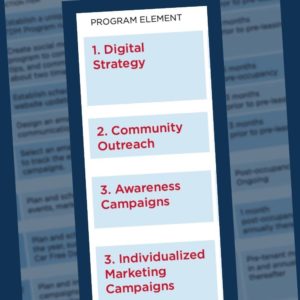
With our experience implementing TDM plans at dozens of properties, W+A designs TDM plans that include step-by-step actions to implement each strategy along with a corresponding budget, timeline, and milestones, to ensure they are cost-effectively operational by the time tenants occupy the property. Our TDM team applied this philosophy to the 110 East TDM plan, which includes the following elements that go beyond CDOT requirements:
- Transportation Program Manager – The plan commits to designating a transportation program manager (TPM) for the site to develop, implement, and monitor the property’s TDM Program. This person is responsible for implementing TDM strategies for the property, coordinating with CDOT, and serving as a central point of contact for the overall TDM program.
- Transportation Advising – The TPM will ensure that “personalized transportation advising” is integrated into tenant walk-throughs, including training for leasing agents. The TPM will train leasing staff on TDM Program elements and information so they can provide this information to tenants as they are being recruited and/or moving in.
- Marketing + Promotions – Both basic and supplemental strategies encourage the use of various non-SOV transportation options available at the 110 East site. To ensure tenants receive the full value of these transportation amenities, it is important to promote their availability through ongoing and regular communication with tenants and their employees. Therefore, the TPM will use the following marketing strategies to communicate with employees and visitors on an ongoing basis:
- TDM Marketing Plan
- Site-based Transportation Access Guide
- TDM Program Website
Is 110 East a Sign of What’s to Come in Charlotte?
The 110 East project was the first development in the City of Charlotte to submit a TDM Work Plan to the Charlotte Department of Transportation (CDOT) for review and approval. Other noteworthy developments in the city, like Ballantyne and the expansion of Atrium Health at the Carolinas Medical Center, are also required to submit a TDM Work Plan.
The trend of large developments committing to TDM strategies is likely to continue given that TDM is a significant component of the mobility goals outlined in the latest draft of Charlotte’s Future 2040 Comprehensive Plan.

